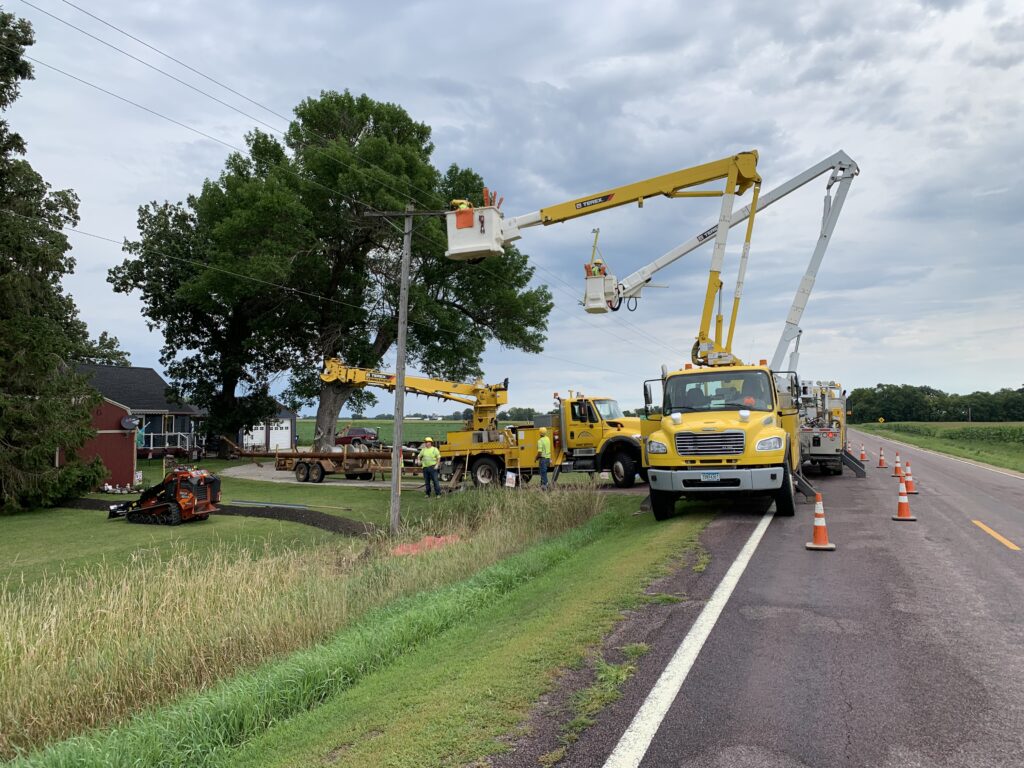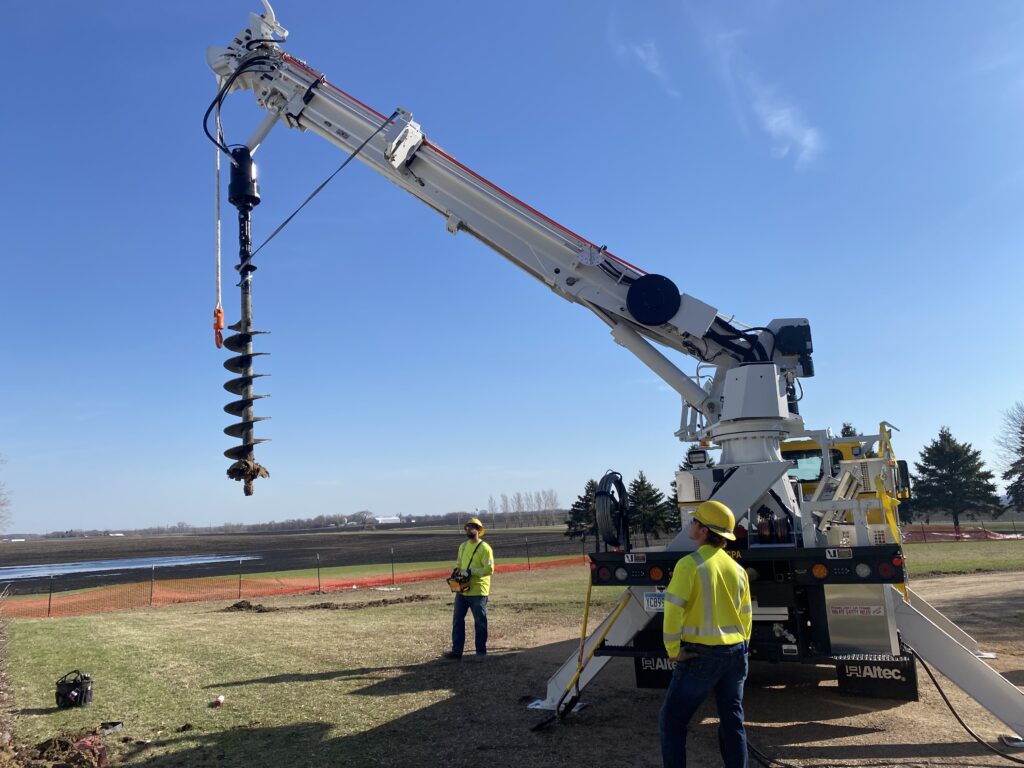RATE 2 ESTIMATING TOOL
Click here to use the online tool for estimating the increase for Rate 2 – Farm and General Services rate.
* Please note that this is an estimate based on the amount of energy that is consumed. This requires member to look at a recent bill to verify their account’s monthly kWh consumed.


We invite Members to review these Frequently Asked Questions for more information.
How much is the increase? After careful consideration of the recently completed Cost of Service Study and financial forecasts, there is a need to increase overall revenue by roughly 12%. Members can click here to review the specific increases for each rate class.
When will this change go into effect? It’s anticipated that the new rates will take effect on January 1, 2025, and will appear on the monthly billing statements received in February.
Why is the rate increase necessary? The costs to provide power have continued to increase.One of the biggest factors is the increased costs of purchasing power from our wholesale energy provider, Great River Energy. The cost of purchasing power is roughly 60% of MCPA’s entire budget, so even a modest increase in wholesale power costs has a significant impact. McLeod Co-op also is seeing continued inflation pressures for materials, fuel costs, and various other aspects of our operations. Additionally, for several years, the cooperative was fortunate to be able to utilize deferred revenues from previous years, which ultimately delayed the need to increase rates. Since these deferred revenues are no longer available, this loss of revenue plays a part in the rate increase.
When was the last time the Co-op had a general rate increase? In 2024, the cooperative implemented a rate increase that raised overall revenue by roughly 3.5%.
Why are we seeing consecutive years of rate increases? A multi-year approach was planned as early as 2023, utilizing a modest increase in 2024 and then another increase in 2025. This phased strategy allowed time to complete a thorough Cost of Service (COS) study. The COS study provided an in-depth analysis of revenue forecasts and rate modeling for each rate class.
How will the increase affect my bill? All rate schedules are seeing an increase, which includes an increase in the System Delivery Charge and a slight increase in the energy charge. As mentioned above, the November edition of MCPA News included a breakdown of the increases for each rate class. This information can also be found by clicking on this link. We also have an online estimator for Rate 2, our Farm and General Services rate, that can provide an estimate on the anticipated increase based on the account’s monthly electrical use.
What is the purpose of the System Delivery Charge? The System Delivery Charge (SDC) is a set (or fixed) amount that’s on your bill every month, regardless of the amount of electricity that you use. It covers some of the costs for the materials (like wires, poles, and equipment) that bring power to your home, farm, or business. It also helps to pay for services like restoring power during outages.
What is the basis of the energy charge? The amount of energy you use is multiplied by a rate called the per kilowatt-hour rate. It covers our costs for buying the electricity that members require, and some of the costs for operating our system that are not captured in our system delivery charge (SDC).
What can members do to reduce their electric bill? The most direct way that all members can influence their electric bill is by reducing the monthly electricity that is consumed by appliances, heating/cooling, lighting, and electronic devices. SmartHub is a key account management tool that members can utilize to track consumption and manage their accounts. Enrolling in our load management programs can also provide savings.
We’re encouraging members to contact us if they have questions about how they can reduce their bill. Members can also visit our website to register for SmartHub, learn about the various load management programs, and find energy saving tips (www.mcleodcoop.com).
Has the Co-op’s new headquarters caused the need for a rate increase? Although there are some depreciation expenses with the building, the new facility, completed in 2020, was largely financed using proceeds from the sale of the Co-op’s Direct TV business. We are fortunate not to have any debt on the facility.
How will the rate increase affect MCPA’s profits? We are a not-for-profit, member-owned electric cooperative. If there are any profits at the end of the year, they are allocated back to you in the form of capital credits.
Should I be concerned about the cooperative’s future stability? No, periodically the Co-op must raise rates to ensure we collect sufficient revenues to cover our costs. We continuously review our financial projections to ensure that the Cooperative remains in a positive financial standing.

Below are the three major components of your electric bill to ensure members have a good understanding of what makes up your bill and how each of these areas relate to the approved rate increase.
1. SYSTEM DELIVERY CHARGE (SDC) – The System Delivery Charge (SDC) is a flat fee that’s on your bill every month. It doesn’t change regardless of the amount of electricity that you use. It covers some of the costs for the wire, poles, transformers, and other facilities that are ready to bring power to you. We have faced continued inflation pressures on materials and other operating costs over the past few years.
2. ENERGY CHARGE – This is the charge on your bill that is determined by the amount of energy (kilowatt-hours) you use. The amount of energy you use is multiplied by a cents per kilowatt-hour rate. It covers our costs for buying the electricity from our wholesale providers and the rest of the fixed costs that are not captured in our SDC. The largest expense to our cooperative is the energy we purchase for our members from Great River Energy (GRE) and Western Area Power Administration (WAPA). It is roughly 62% of our annual budget. GRE’s wholesale rates have increased over 20% since 2020. We have also seen increases from WAPA.
3. POWER COST ADJUSTMENT (PCA) – The PCA can either be a charge or credit on your monthly bill. It is used to manage the variability of the costs to purchase electricity from our suppliers each month. Some of the variability we see comes from non-typical seasonal weather across the mid-west region.
